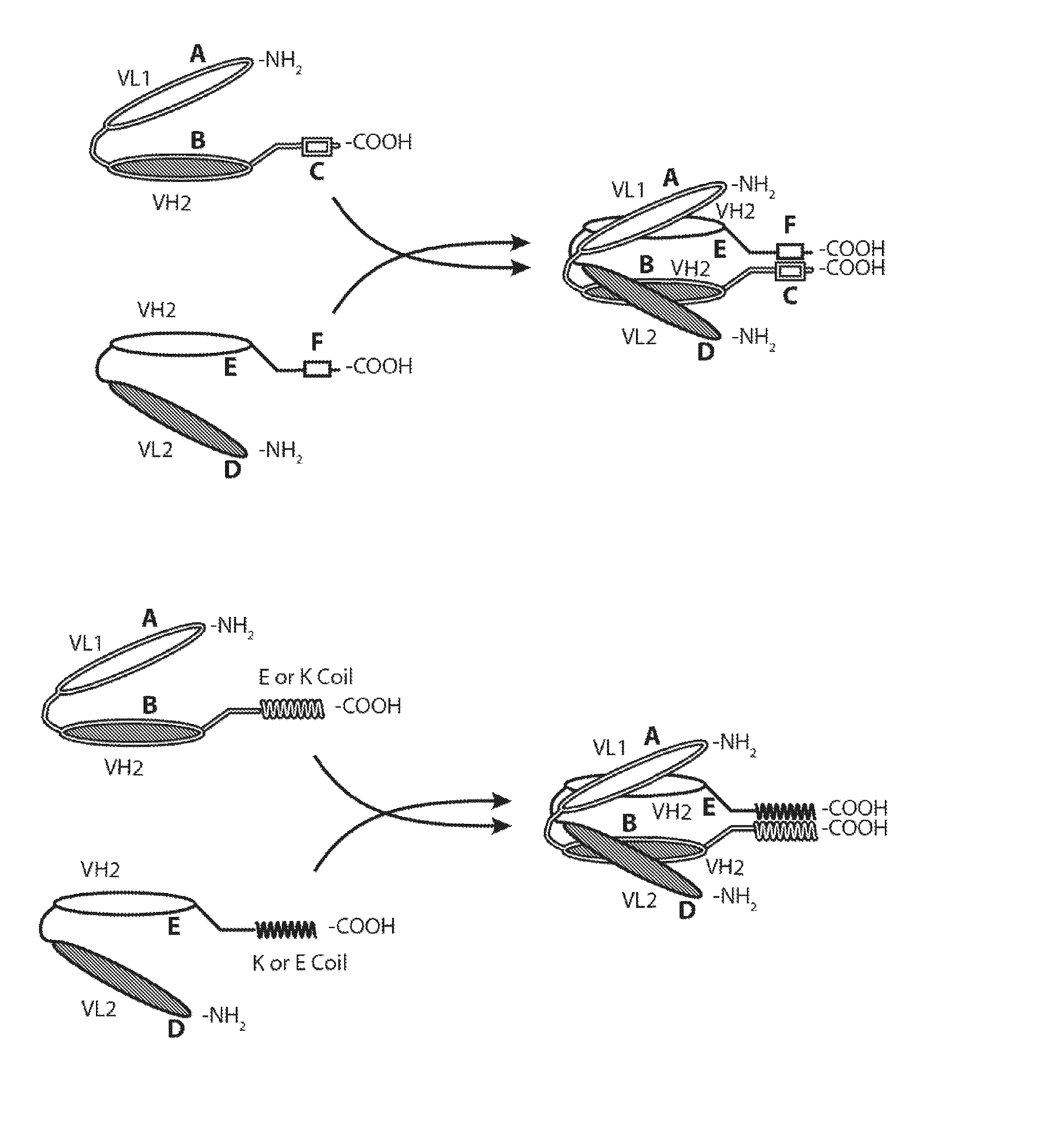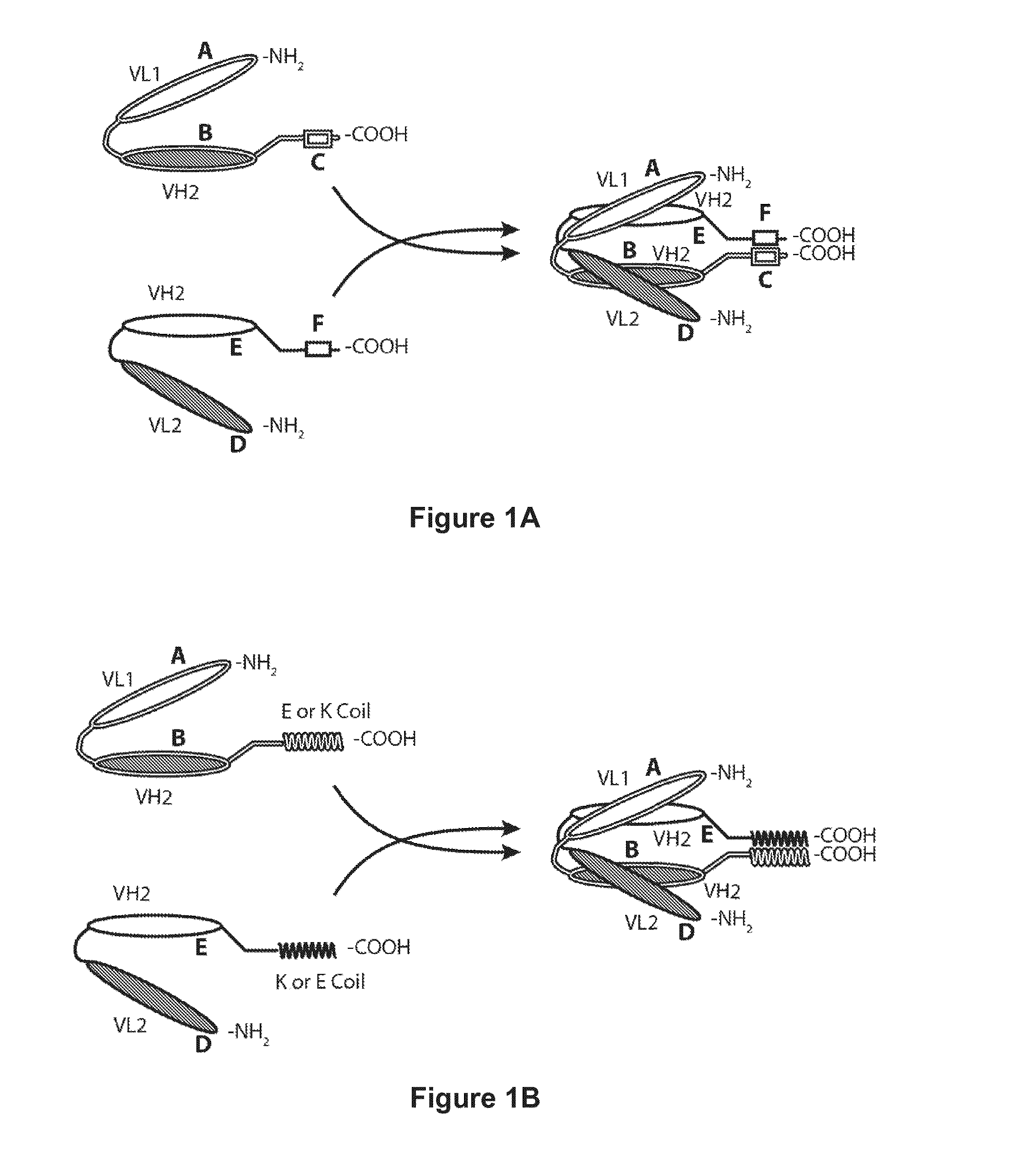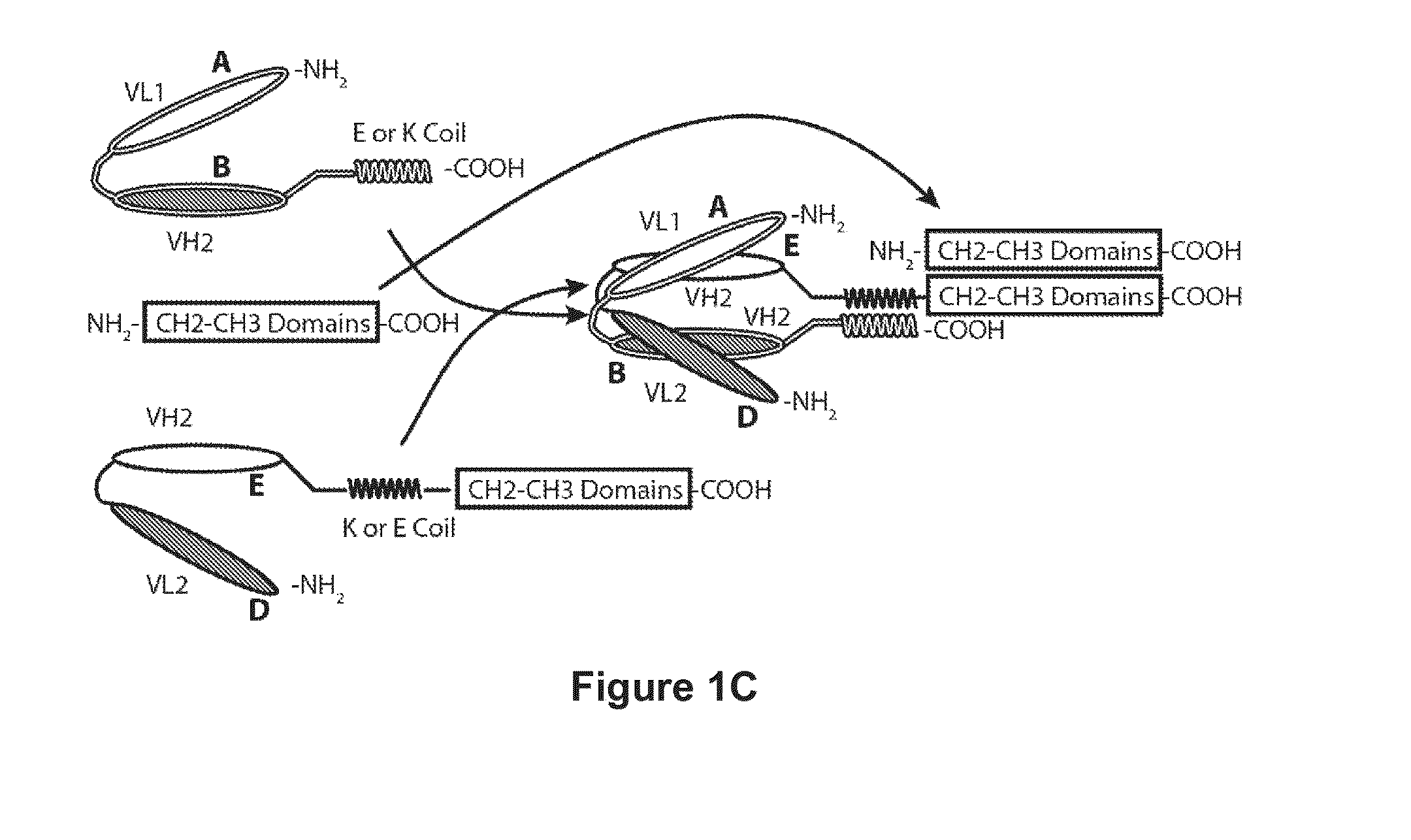Bispecific Molecules That are Immunoreactive with Immune Effector Cells That Express an Activating Receptor and an Antigen Expressed by a Cell Infected by a Virus and Uses Thereof
a technology specific molecules, applied in the field of bispecific molecules, can solve the problems of drug side effects that are not easy to detect, and achieve the effects of facilitating the killing of virally infected cells, enhancing the activation and targeting of immune effector cells, and enhancing the effect of viral infection
- Summary
- Abstract
- Description
- Claims
- Application Information
AI Technical Summary
Benefits of technology
Problems solved by technology
Method used
Image
Examples
example 1
Construction of Bispecific Molecules for Latent EBV
[0187]Bispecific molecules specific for human T-cells and Epstein-Barr virus (CD3×LMP-1 and TCR×LMP-2) can be prepared as a dual affinity retargeting (diabody molecule. Such bispecific molecules have the ability to localize a T-cell (by binding such T-cell to the CD3 portion of a CD3-binding bispecific molecule or to the TCR portion of a TCR-binding bispecific molecule) to the location of a cell latently infected with EBV and expressing LMP-1 or LMP-2 (respectively) (by binding such cell to the LMP-1 or LMP-2 binding portion of the bispecific molecules). The localized T-cell can then mediate the killing of the cell latently infected with EBV in a process termed “redirected” killing. Antibodies that bind to LMP-1 or LMP-2 are known in the art (Fang, C. Y. et al. (2004) “Construction And Characterization Of Monoclonal Antibodies Specific To Epstein-Barr Virus Latent Membrane Protein 1,” J. Immunol. Methods 287(1-2):21-30; Fruehling, S...
example 2
Treating EBV Latent Infection
[0190]Resting memory B cells represent the site of persistence of EBV within the body. (Babcock, G. J. et al. “Epstein-Barr Virus-Infected Resting Memory B Cells, Not Proliferating Lymphoblasts, Accumulate In The Peripheral Blood Of Immunosuppressed Patients,” J. Exp. Med. 190(4):567-576) In normal EBV-infected adults, from 1 to 50 B cells per million in the circulation are infected with EBV, and the number of latently infected cells within a person remains stable over years.
[0191]Of the nearly 100 viral genes that are expressed during replication, only 10 are expressed in latently infected B cells in vitro, including LMP-1 and LMP-2.
[0192]By markedly limiting viral gene expression during latency, EBV reduces the number of viral proteins expressed, thereby limiting the “exposure” of infected cells to the host's cytotoxic T cells.
[0193]A patient with latent EBV infection is administers a CD3×LMP-1 bispecific molecule. The bispecific molecule binds to LMP-...
example 3
Construction of Bispecific Molecules for HPV
[0194]A bispecific molecule specific for human T-cells and human papillomavirus E6 (CD3×HPV E6 / MHC) can be prepared as a dual affinity retargeting (diabody) molecule. Antibodies that bind to human papillomavirus E6 are known in the art (Phaeton, R. et al. (2010) “Radioimmunotherapy With An Antibody To The HPV16 E6 Oncoprotein Is Effective In An Experimental Cervical Tumor Expressing Low Levels Of E6,” Cancer Biol. Ther. 10(10):1041-1047; Lagrange, M. et al. (2005) “Binding Of Human Papillomavirus 16 E6 To P53 And E6AP Is Impaired By Monoclonal Antibodies Directed Against The Second Zinc-Binding Domain Of E6,” J. Gen. Virol. 86(Pt 4):1001-1007; Wlazlo, A. P. et al. (2001) “Generation And Characterization Of Monoclonal Antibodies Against The E6 And E7 Oncoproteins Of HPV,” Hybridoma 20(4):257-263) and can be obtained from Acris Antibodies (San Diego, Calif.), GenWay (San Diego, Calif.), mybiosource(dot)com and other sources.
[0195]Such a bisp...
PUM
| Property | Measurement | Unit |
|---|---|---|
| Level | aaaaa | aaaaa |
Abstract
Description
Claims
Application Information
 Login to View More
Login to View More - R&D Engineer
- R&D Manager
- IP Professional
- Industry Leading Data Capabilities
- Powerful AI technology
- Patent DNA Extraction
Browse by: Latest US Patents, China's latest patents, Technical Efficacy Thesaurus, Application Domain, Technology Topic, Popular Technical Reports.
© 2024 PatSnap. All rights reserved.Legal|Privacy policy|Modern Slavery Act Transparency Statement|Sitemap|About US| Contact US: help@patsnap.com










